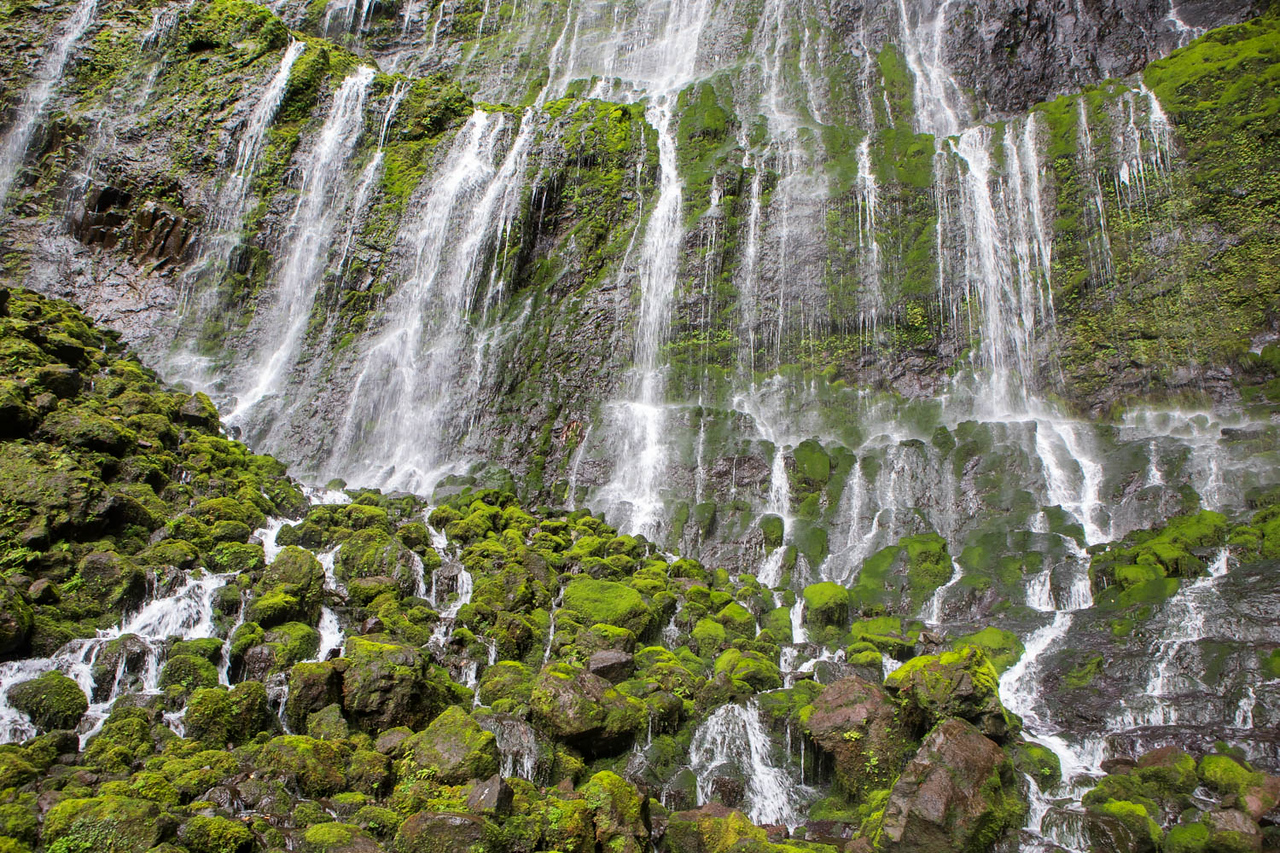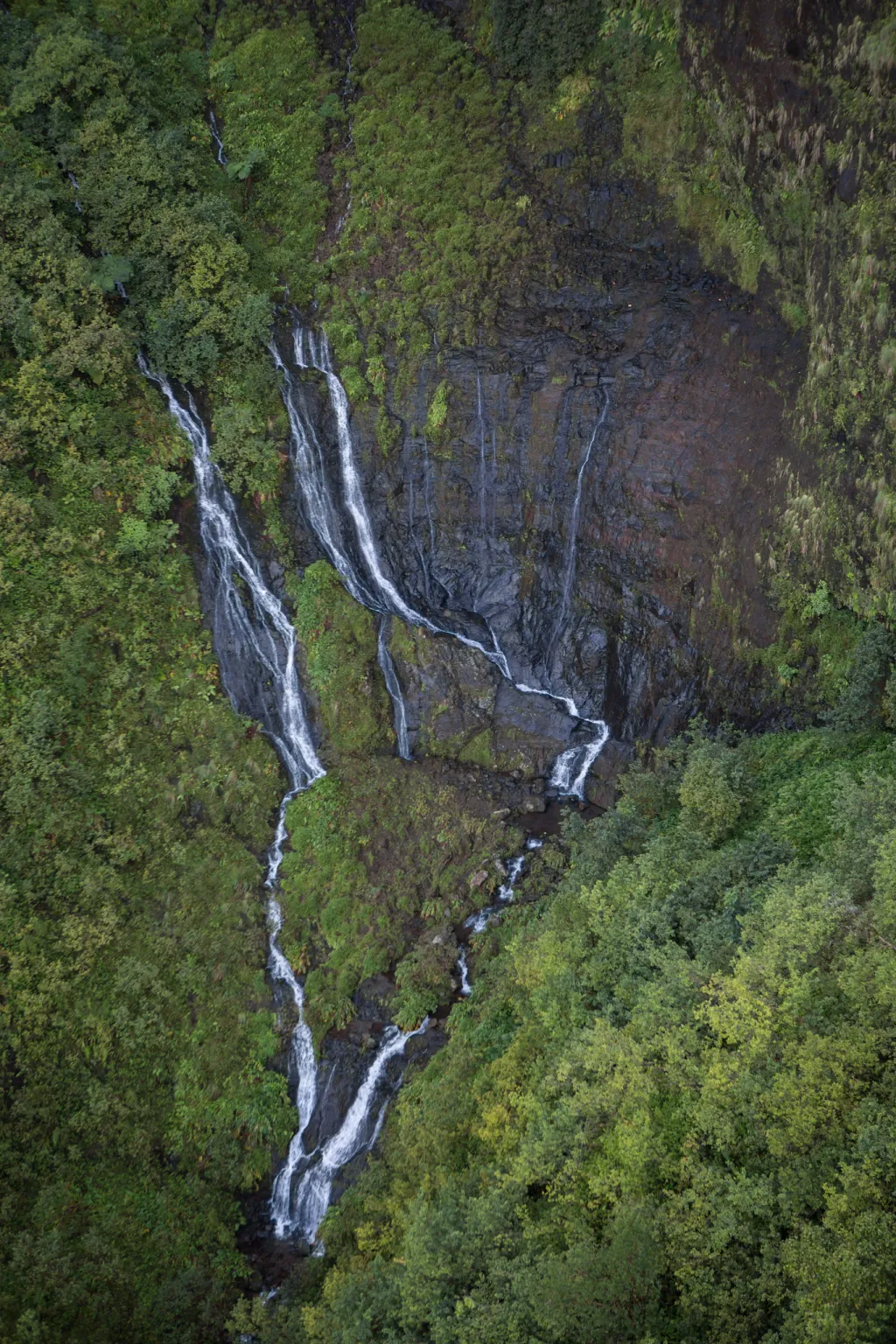History of Mount Waiʻaleʻale
From Hot Lava to a Flourishing Mountain Peak:
A Brief Look at the Origin and Transformation of Mount Waiʻaleʻale

Kauaʻi Photographer – Kit Furderer
The Pacific Plate Gives Life to the Hawaiian Islands
 Deep below the ocean’s surface, in Hawaiʻi Nei, lies a story. It is one of friction, heat, volcanoes, lava, rock, and life.
Deep below the ocean’s surface, in Hawaiʻi Nei, lies a story. It is one of friction, heat, volcanoes, lava, rock, and life.
It all starts with a mass tectonic plate deep down in the ocean, known as the Pacific Plate, and its movement across the Earth’s crust. (1) As the plate shifted over a plume of magma, or “extremely hot liquid and semi-liquid rock located under the Earth’s surface,” it pierced the Earth’s crust, providing a pathway for the magma to flow freely. (2) This hot magma, known as a hotspot, shot up with immense pressure and force in the middle of the Pacific Plate, forming the volcanoes that gave life to the Hawaiian Islands. (3)
The formation of the Hawaiian Islands chain most likely started with Niʻihau. According to the United States Geological Survey (USGS), “Ni‘ihau probably formed first, since it is farthest west in the chain and volcanoes to the east are younger, but data indicating the exact onset times of the two volcanoes do not exist. We only know that both volcanoes formed about 6 million years ago.” (4)
While the hotspot below the Hawaiian Islands is fixed, the plate continues to move. (5) Volcanic activity still occurs today on the Big Island of Hawaiʻi, the youngest island in the chain.
Fast Forward 2 Million Years
Niʻihau and Kauaʻi are now past the shield stage of the growth of Hawaiian volcanoes, “when eruptive activity is frequent and the volcano rapidly builds above sea level.” (6) As Niʻihau and Kauaʻi moved into the postsheild stage, “volcanic activity starts to wane and erosion outpaces resurfacing by lava” resulting in the stunning canyons and cliffs you see today. (7)
The towering Mount Waiʻaleʻale, located nearly smack dab in the center of beautiful Kauaʻi, is home to a plethora of awe-inspiring canyons and deeply carved cliffs born from this lava long ago.

Kauaʻi Photographer – Kit Furderer
Mount Waiʻaleʻale’s Ancient History & the Heiau of Kaʻawako
The ancient, sacred, waterfall-drenched caverns of Mount Waiʻaleʻale hold a deep cultural history drenched in ancient Hawaiian traditions. It was a place of pilgrimage and spiritual significance, a treacherous journey into the heart of Kauaʻi.
According to Hank Soboleski, author of Kauaʻi Island History parts 1 & 2 and longtime writer for the Garden Island News, “Long ago, Hawaiian chiefs and priests would climb Mount Waiʻaleʻale’s forbidding eastern face each year to the summit, where they would make offerings of flowers and wreaths and chant praises to their god Kāne at a small, stone heiau called Kaʻawako.” (8)
Kāne is the head chief among the gods, the creator of sky and light, and the god of procreation in Hawaiian tradition. Hawaiians worship Kāne for giving life to humans and the realms of sun, dawn, and sky. (9)
As you can imagine, this expedition was no small feat. The Hawaiian chiefs and priests began at the Wailua River. They traveled upstream by canoe until they could travel no more. From there, it was all up-mountain. Once they reached the base of the gigantic eastern-facing ridge, Hank Soboleski says,
[they’d] climb to its spine at about 2,300 feet, and make camp for the night. In the morning, they’d continue their ascent on a steep trail leading to a false summit named Pōhakupele, and onward to the northern end of Waiʻaleʻale’s summit, a steep, slippery, and treacherous route with fearsome drop-offs on either side. (10)
Evidence shows that these magnificent hikes took place well into the mid-1800s when Hawaiians made the trek in clear conditions to view neighboring Oʻahu. (11) In 1870, George Norton Wilcox successfully reached the summit with the help of Hawaiian guides. (12) The last recorded climb up Mount Waiʻaleʻale’s steep eastern ridge was in 1874 by George Norton Wilcox (his second ascent), George Dole, and Fred Smith. (13) Valdemar Knudsen attempted the climb 100 years later but had to turn around near 3,000 feet due to impenetrable terrain. (14)

Kauaʻi Photographer – Kit Furderer
The spiritual significance and spectacular draw of Mount Waiʻaleʻale are still strong to this day. While the eastern facing climb is no longer accessible, experienced hikers, who usually hike with someone who has already traversed the challenging path, continue to make the pilgrimage for a myriad of reasons: natural beauty, inspiration, spiritual connection, clarity, and pure excitement to name a few.
Today, the dark green, cloud-shrouded peak of Mount Waiʻaleʻale beckons hikers forth as it reaches high into the skies as if inviting the rain to fall heavily from the dense clouds above. And heavily, it falls. One must brave the rain for this adventure, the pot of gold at the end of the rainbow, if you will.
Standing 5,148 feet tall, Mount Waiʻaleʻale, meaning “rippling water” in Hawaiian, is one of the wettest spots on Earth, with an average rainfall of 450 inches per year. (15) Rainfall from Mount Waiʻaleʻale feeds the only navigable rivers in all of Hawaiʻi: the Waimea, Wailua, Makaweli, and Hanapēpē. (16)
Kawaikini, part of Mount Waiʻaleʻale’s central mountain mass, sits at a commandingly stunning 5,243 feet above sea level, making it the highest peak on the Garden Island. (17) Its mystical top is often covered in thick white clouds and huge, dark raindrops, offering an air of mystery and intrigue. Colorful rainbows slide down its deep caverns, highlighting pockets of emerald green trees, lime-colored rocky inlets, and light, baby-blue-tinted boulders.
From deep within Mount Waiʻaleʻale’s walls, a mountain mist magically rolls from, around, and through, whispering a story carved from resilience, strength, pressure, grit, and determination. This story is millions of years old, woven from a fire deep within the mantel of the Earth, held by water, and nourished by the sun. It is a story carried by tradition and the sacredness of ancient ways. It is a story with millions of more years unwritten and yet to come.
[1]: https://education.nationalgeographic.org/resource/chain-islands-hawaiian-hot-spot/
[2]: https://education.nationalgeographic.org/resource/magma/
[3, 5]: https://oceanservice.noaa.gov/facts/hawaii.html
[4, 6, 7]: https://www.usgs.gov/news/volcano-watch-geologic-tour-hawaiian-islands-kauai-and-niihau
[8, 10-14]: https://issuu.com/tgifriday/docs/kauaiislandhistory010519p1
[9]: https://historycooperative.org/hawaiian-gods/
[15-17]: https://www.britannica.com/place/Mount-Waialeale

